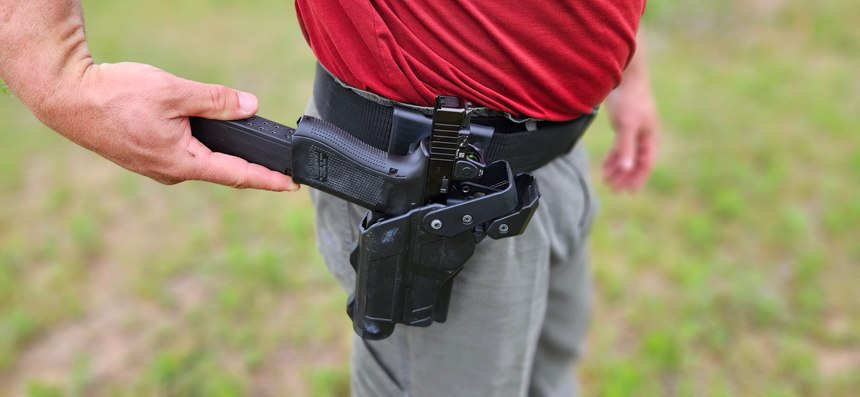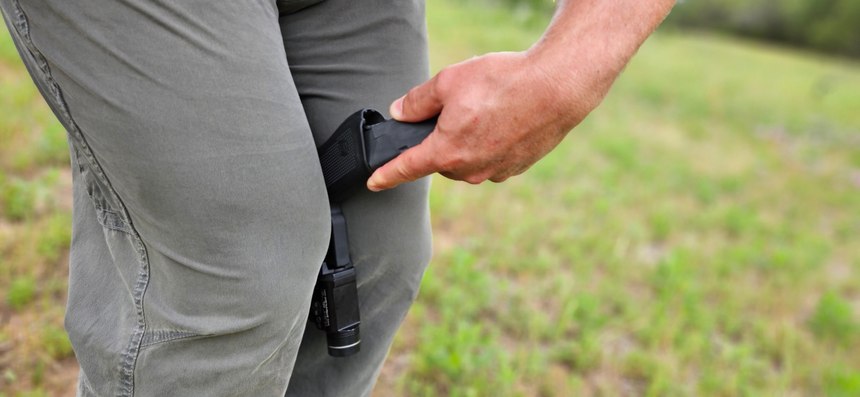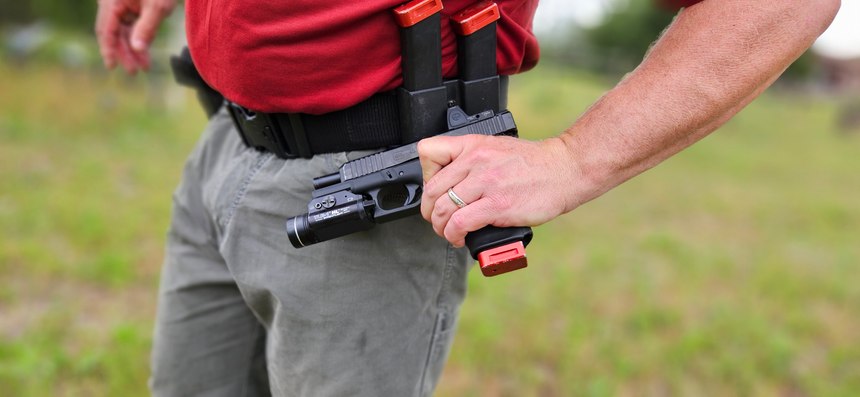Article by Todd Fletcher for Police1 – police1.com
On March 7, 2003, Ukiah (California) Police Department Sgt. Marcus Young volunteered to work an extra shift to cover a patrol team that would otherwise be short-staffed. He was accompanied by Julian Covella, then a 17-year-old high school student and a police cadet. They were dispatched to the local Walmart where store employees had detained an 18-year-old shoplifter.
After taking the suspect into custody and placing her into the back of his patrol car, the shoplifter’s boyfriend approached Sgt. Young. As the man got close to Sgt. Young, he pulled a knife from his pocket, and a struggle over the knife ensued.
During this struggle, the man drew a .38 caliber revolver and shot Sgt. Young five times piercing his back, cheek and upper arm. Sgt. Young had been knocked to his knees, and his right arm was paralyzed. He was bleeding profusely including from a large two-inch laceration between the index and middle fingers of his left hand. He was unable to draw his gun, so he called Julian Covella into action by asking him to draw his handgun and place it in his left hand.
Covella had already used the radio to call for backup, but the murderous suspect was attempting to get into the patrol car where Sgt. Young had a patrol rifle and shotgun. Sgt. Young steadied himself and fired four rounds using his blood-soaked left hand to stop the criminal before he could access the long guns.
Today, 20 years after Sgt. Young and Julian Covella’s heroic actions, most law enforcement firearms training continues to pay only cursory attention to one-handed shooting skills. Even when we go to the range and train on our own, we tend to practice the skills we’re good at instead of the skills we need to improve the most. There is a very real possibility that we may be shot and injured before we can draw and neutralize an attacker. The time to practice the skills needed to prevail under these circumstances is now.
When looking for specific skills to work on, instead of practicing your same old routine, think about the skills you’ve regularly avoided practicing. How frequently do you practice shooting strong hand only? How about support hand only?
Confession time: I’m a pretty good shooter. I train on a regular basis, including dry fire practice several times each week. I shoot several USPSA and IDPA matches each month. Even with all the practice and competitive shooting I do, when it comes to shooting strong hand only or support hand only, I kind of suck. Therefore, I have made the commitment to practice at least some strong hand only and support hand only drills every time I train.
The primary reason I have made this commitment to improve my one-handed shooting skills is because of incidents like Sgt. Young experienced. Sgt. Young continues to have medical complications from his injuries, but as bad of a day as it was, it could have been significantly worse for Sgt. Young, Julian Covella, their families, and any of the shoppers and employees of the store. Thanks to Sgt. Young’s winning mindset and one-handed shooting skills, he was able to prevail under some of the worst conditions possible.

I recently attended the 2023 International Association of Law Enforcement Firearms Instructors Annual Training Conference in Houston, Texas. During the week, I attended some very good sessions including a class on early treatment of gunshot wounds, a class on pistol-mounted optics using reactive steel targets, and a class on increasing speed by improving efficiency. These were all top-notch classes delivered by some world-class instructors. But the class that stood out to me was that taught by Paolo Grandis and Alexandria Nelson from Tadpoles Tactics called, “Are you ready for the we(a)k end?”
When we do one-handed shooting skills in training, instructors and students alike don’t enjoy it, mostly because we aren’t very good at it. Often, it’s just an obligatory part of in-service training done maybe once a year. In contrast, Paolo and Alexandria jammed a four-hour class with one-handed skills. Strong hand and support hand shooting were just the beginning. This fun and humbling class highlighted the self-imposed limitations of our abilities. They used one-handed skill development as the foundation for many different and creative drills including competitive, team and solo drills. Their class proved that one-handed shooting can be fun and serious at the same time.

How often do you practice drawing and reloading using your support hand only? Yup. That’s what I thought. It was easier before we started wearing external vest carriers. It was also a lot easier before I hit the 25-year mark of my career. It’s true that I got a little thicker around the waist, but age also affects flexibility. My shoulders and back don’t move like they used to, so drawing support hand only has become more challenging. Regardless of the reason, we better start practicing those skills on a regular basis lest we let down the ones we love. Again, we don’t want a bad day to be made worse by our own deliberate indifference to training life-saving skills.
While we’re at it, how about we practice clearing malfunctions using one hand? Think about it. If we find ourselves in a situation like what happened to Sgt. Young, it’s more likely that we could experience a stoppage that needs to be cleared before we can continue the fight. Shooting support hand only, with a pretty serious injury to the support hand and that hand covered in blood, and after having been shot several times, it’s likely we would not have an ideal grip on the handgun. In this case, a stovepipe-type malfunction is predictable. I think it would be prudent to work on clearing those malfunctions in the safe environment of the training range.
-2.jpg?w=860&format=jpg&quality=87&crop=0%2C0%2C2593%2C1000)
One training note that needs to be addressed is that when you’re working on your strong hand shooting and it’s time to reload, reload using only your strong hand. And, when you’re working on your support hand shooting, when it’s time to reload, reload using only your support hand. The time to figure it out and be uncomfortable is in training and not on the street during a fight to save lives.

As Sgt. Marcus Young demonstrated, getting shot doesn’t mean you’re done. Getting knocked down doesn’t mean you’re out. Modern emergency medicine combined with advances in combat casualty care has made most gunshot wounds survivable. Along with a winning mindset, we can maximize our ability to prevail under these conditions with better and more frequent training in our one-handed skills. These should include strong and support hand practice of skills including drawing from the holster, shooting, reloading and malfunction clearance. Don’t let a bad day for you turn into the worst day of your family’s lives.
About the author
Todd Fletcher is the owner and lead instructor for Combative Firearms Training, LLC providing training for law enforcement firearms instructors from coast to coast. He has over 25 years of training experience as a firearms and defensive tactics instructor. He retired after more than 25 years as a full-time police officer and over 31 years of law enforcement experience.
Todd is a member of the International Defensive Pistol Association (IDPA) and the United States Practical Shooting Association (USPSA). He is a member of the International Law Enforcement Educators and Trainers Association (ILEETA), and was selected as the 2022 ILEETA Trainer-of-the-Year. He is also a member of the International Association of Law Enforcement Firearms Instructors (IALEFI) and won the 2023 IALEFI Top Gun Award. He can be reached at Todd@CombativeFirearms.com.






